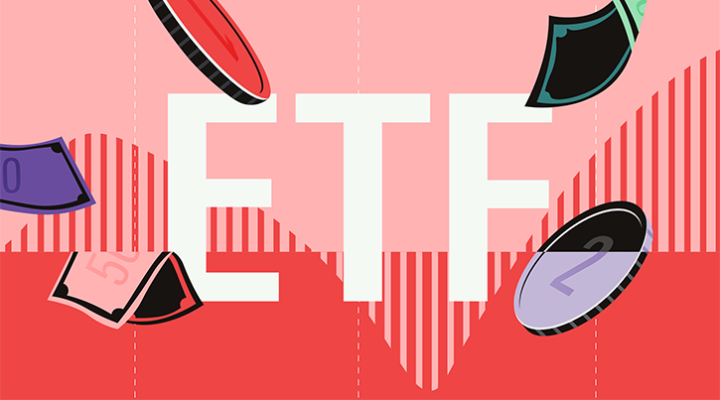
As the 12-year bull market stalls, clients are perhaps more interested in risk than ever. Advisers want confidence their recommendations will hold up in turbulent markets, what the worst-case scenario is, and how large a return investors stand to gain, or lose.
Stress-testing your portfolios can prepare you for unforeseen circumstances and put your clients at ease. Here's how to analyse and build resilient portfolios with Morningstar Direct Lens.
How Investment Teams Use Stress-Testing
Portfolio stress-testing models hypothetical market conditions so investment analysts can understand how their portfolio might act under pressure. It applies historical data to current markets so you can make forward-looking decisions about risk management.
With portfolio stress testing, you can:
1) Gauge portfolio exposure to risk factors. Understand what risk exposure looks like at an aggregate level and what holdings contribute to that risk. Compare a fund to competitors under a range of pressure tests. Funds with similar goals – such as target asset allocations or broad market exposure – might have different risk factor exposures.
2) Assess the maximum drawdown. Past market scenarios can help you set a realistic baseline for future market ups and downs. While past performance doesn’t guarantee future returns, it can help add context to your assessment of risk and reward.
3) Compare your fund to an index benchmark to better understand the quality of a fund's performance. What would your alpha look like in comparison to the S&P 500? Is it worthwhile to assume more risk for potential greater gains?
4) Present your ideas to your team. Get everyone on board with your recommendations when they understand how risk modeling projects potential returns.
5) With the new Morningstar Direct Lens, users can create, edit, and analyse portfolios in one place. Understand how changes would affect your portfolio before you make them. You can see how tweaking positions and asset-class weightings would affect the projected performance of the overall portfolio.
Types of Portfolio Scenario Analysis
Morningstar analysts use two types of scenario analysis to forecast potential outcomes for portfolios.
Market-Driven Scenarios
Market-driven scenarios calculate the probable impact of past market events. Zero in and explore how changes to a single index or security can affect your investment or portfolio. What would happen to your portfolio if the S&P 500 fell by 10% this year? Or by 15%!
By adjusting the length of the scenario's duration, the percentile of the distribution, and the type of market shock, you can pressure-test your portfolios in a range of possible scenarios.
Market-driven scenarios can help you answer questions like:
• How would a fund's projected performance look? How does that compare to the index?
• How likely is any projected outcome? Would this shock trigger volatility and uncertainty?
• What does this reveal about the possible worst-case outcomes for the fund?
You can compare data points that assess the impact of market shocks (good and bad) on:
• Factor exposure;
• Portfolio return;
• Value at Risk—the potential of loss with a given probability;
• Conditional Value at Risk—mean loss of a portfolio below the user-specified percentile.
Stock market scenarios prepare you to ask more informed questions and deeply analyse underlying holdings. See how a portfolio compares to a benchmark index and target sector allocation, or evaluate individual risk factor exposures at the portfolio level.
Macrofinancial Scenarios
These models calculate the impact of user-specified macroeconomic and financial system shocks. If the 2007-09 sub-prime mortgage crisis happened today, how would your portfolio perform? Would it beat a relevant benchmark? If not, how would adjusting individual securities close the gap?
Macrofinancial scenarios help you understand the drivers of market risk in historical scenarios and apply your findings to forward-looking decisions. They can answer questions like:
• How would my portfolio perform in a severe or long-lasting bear market?
• How am I capturing the upside of regional economic tailwinds or sector booms?
Evaluate investment portfolios under past macrofinancial scenarios like:
• Global macroeconomic events, like the coronavirus outbreak;
• US-specific events, like the mid-2011 showdown over the debt ceiling;
• Emerging markets events, like the 2006 sell-off;
• European markets events, like the 2010 Greek debt crisis.
While the past doesn't predict the future, you can ground your expectations for fund or portfolio performance under macro headwinds. Evaluate data points like:
• Projected cumulative returns;
• Alpha;
• Max drawdown;
• Return;
• Standard deviation;
• Tracking error.
In Morningstar Direct Lens, you can also create custom scenarios and see how macroeconomic variables affect a portfolio’s risk and return.
Custom scenarios allow you to turn up and down the intensity of different factors for deeper levels of analysis. Specify multiple shocks at different points in time and calculate the expected risk and return of the portfolio.
An Easier Way to Analyze Portfolios
The Morningstar Direct Lens interface makes it easy to build, edit, and analyse portfolios. In one place, you can look through individual holdings and roll up exposure across the portfolio.
The new tool combines attribution with the deep, broad funds and competitive analysis data you trust from Morningstar. See it for yourself with a 20-minute demo.





























